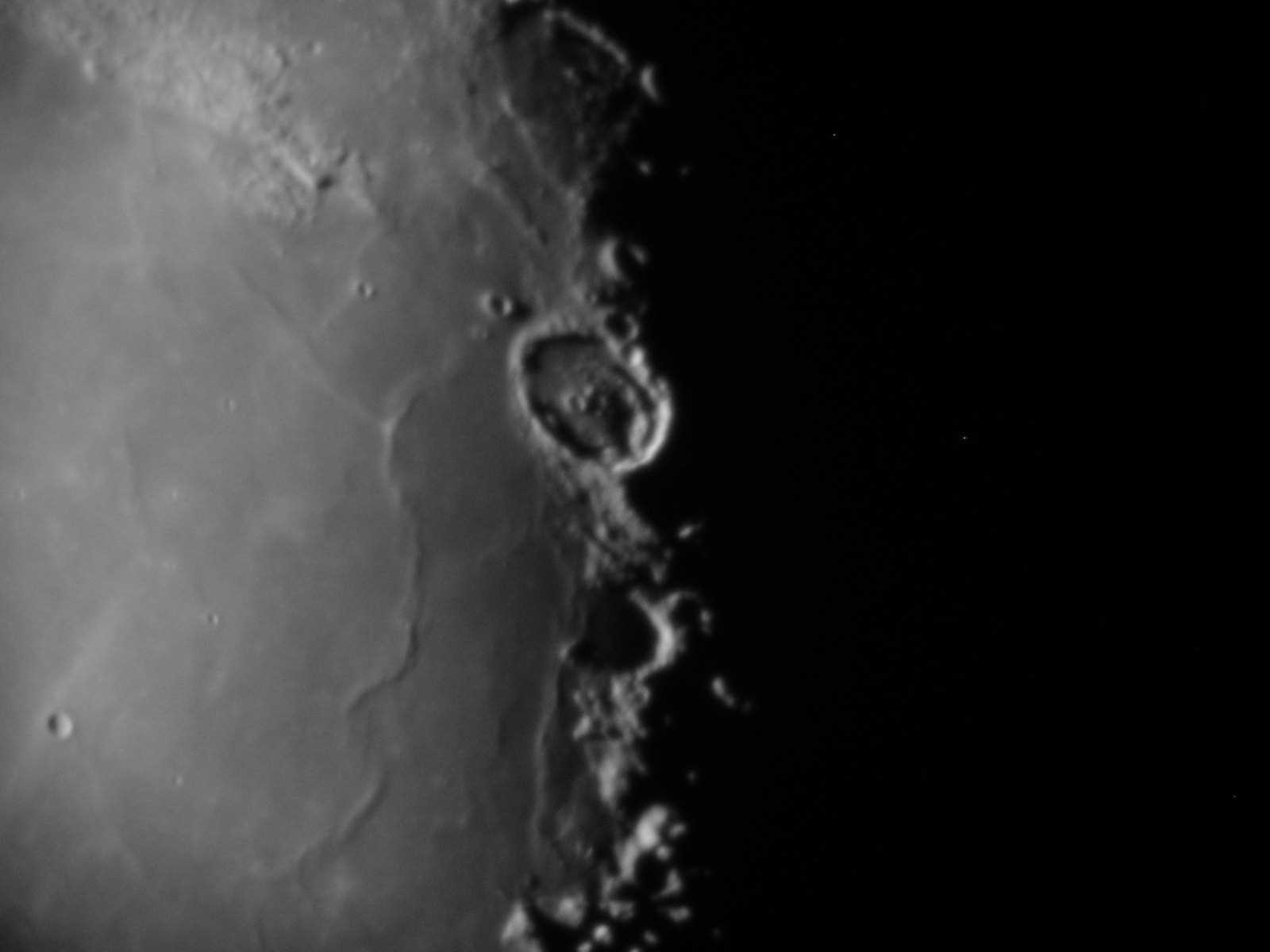L20 - Posidonius
Most craters on the moon come in two flavors. New craters look very fresh and retain most of the features they had soon after the impact event that created them. Older craters have often been flooded with magma that has come up through cracks from below, creating a smooth bottom that covers many of the crater's original features. Posidonius is a one of the easiest to observe members of a less common class of crater, the floor-fractured crater. These craters retain some of their original features, but have a fractured floor that is usually higher in the middle. It is believed that they are modified when magma pushed up through the area of the crust weakened by the original impact event, but the magma did not get completely to the surface. Instead, the magma raises the floor of the crater and causes it to buckle and split.
Mouse over the photo for annotation.

Images © Doug Anderson
This image was taken on 22-Sep-2005 through a 203mm Celestron C-8 Schmidt-Cassegrain reflector afocally coupled to an Olympus C-700 digital camera through a 40mm eyepiece. North is up.